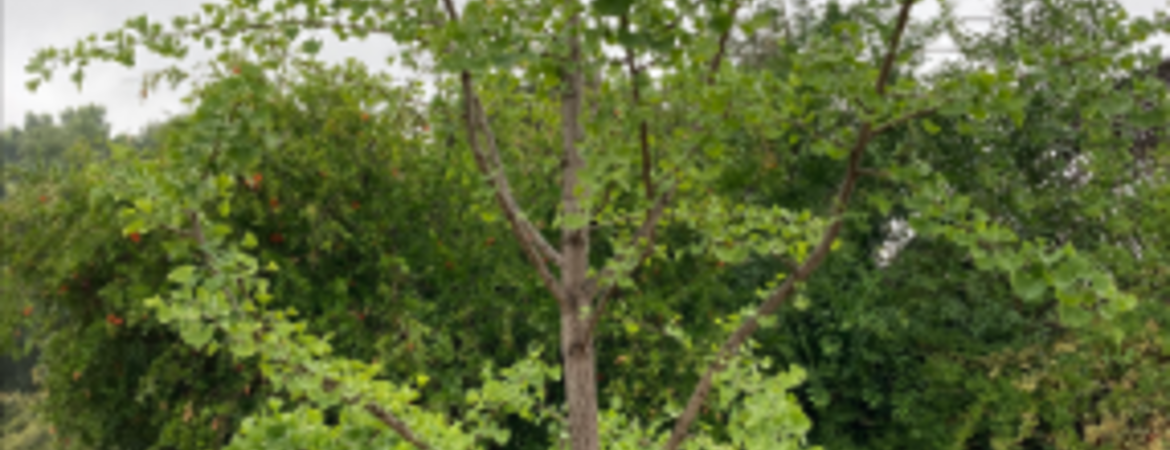
There is among us a form of life whose ancestry traces back nearly 300 million years. This is the ginkgo tree, Ginkgo biloba, whose closest relatives also have ancient heritage. Although it has broad leaves like angiosperms, ginkgo is a gymnosperm, closely related to cycads and conifers, because it produces “naked seeds” on its branches rather than seeds enclosed in flowers and fruit. Its broad leaves also differ from angiosperms in having the ancient form of dichotomous venation rather than parallel (as in monocots) or netted (as in dicots). The ginkgo tree has sometimes been called “maidenhair fern tree” because of the resemblance of its leaves to those of the maidenhair fern, another early-evolved plant.
The unusual leaf form of the ginkgo was the inspiration for a love poem by the poet Johann Wolfgang von Goethe, a literary, scientific, and political giant whose works have been considered the greatest in the German language and resonate to this day. Along with his prodigious intellection output, Goethe was a romantic, and addressed his love poem to the young wife of a friend. Using the symbolism of duality, he strikes a chord of “two as one”, as seen in the shape of the “Ginkgo” leaf.
The history of Ginkgo biloba among humankind stretches back as far as recorded history and beyond. An early ginkgo was identified in fossils from the Jurassic period, (200+ million years ago) and there are fossil leaves very similar to those today in rocks of the Eocene epoch (56 million years ago to 34 million years ago). Like many of its close relatives, ginkgo has survived millennia by having a deep taproot and the ability to withstand poor soils, air pollution, heat, and drought. With the expansion of angiosperms during the Eocene, native populations of ginkgo were thought to shrink until only a small number of trees remained in China. It is from this stock that ginkgo trees were cultivated; today they are often planted as unique ornamentals in gardens and landscapes. The seeds of the female tree have an undesirable odor so male trees are preferred; unfortunately, the gender of the trees cannot be determined until they are mature, which is often too late!
Ginkgo extract was at one time considered an aphrodisiac, and it was also believed to protect and improve memory. Although today’s medical supplement shelves are stocked with various forms of Ginkgo biloba, there is no clear evidence of its medicinal effects except for some toxicity if consumed in large quantities.
We are left today with simply a beautiful tree, and one symbolic in the past of romantic love. Its delicate foliage is a delight to see, and especially when it turns a brilliant yellow in autumn. It has been cultivated in many aristocratic gardens, including that of Goethe himself. It is especially revered for its longevity, with some trees dating back at least 1,000 years, and for its capacity to survive and prosper in adverse conditions. The Botanic Gardens has two mature trees along the main drive in the Temperate Deciduous Forest area and a lovely young specimen near the upper restroom.